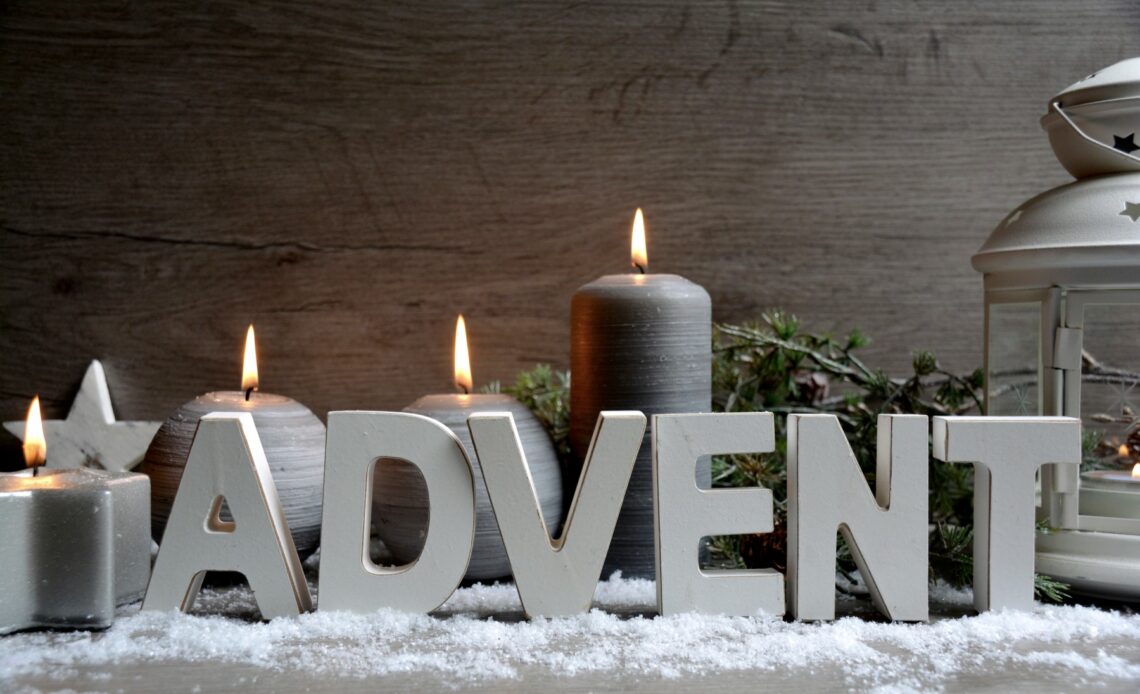Whether you’re hosting a large group of houseguests for Christmas, or you’re simply making sure that everyone on your gift-list has a present to open during your Christmas celebration, it’s obvious that the Christmas season includes a great deal of preparation. While making sure that you have room for guests, gifts for everyone, food for parties and family dinners, you spend a lot of time preparing during the Christmas season. However, preparing for things in the physical realm is only one part of the equation, and it’s ultimately less important than the preparation associated with Advent.
We are already aware of what Christmas is truly about. Before Christ could be offered up on the cross of Calvary as a sacrifice for our sins, He had to be born of a virgin in order to fulfill the prophecies given in the Old Testament. From the moment that Mary found out that she was going to give birth to a child, the preparation for Christ’s appearance began. While Mary and Joseph were prepared, others weren’t. Some embraced His glorious arrival, while others chose to ignore it completely or to try to shut down the news. Today, the power of the birth of Christ forces us to make a decision about how we will respond to it. Will we make preparations to properly celebrate His miraculous birth, or we will become so consumed with everything else around us that we fail to properly acknowledge it?
Advent is the season of preparation that proceeds the Christmas celebration. Obviously, you don’t have to make preparations to your home for a physical appearance of Christ, but this season does afford us the opportunity to embrace the celebration of His birth in the spiritual.
Today, we’re going to take a look at what Advent is, when it is celebrated, and how you can take the steps to observe it. If your church celebrates Advent, some of this may be familiar to you, but there are several bodies of believers that don’t incorporate Advent into their corporate worship and allow congregants to make their own decisions concerning Advent. If that’s the case for you, you can apply what we’re going to study today to make Advent a part of your family’s annual Christmas celebration.
What is Advent?
At its core, Advent is simply a time of preparation for the Christmas celebration. As believers in Christ, we understand that the birth of Christ is one of the most important aspects of our faith. That means that Christmas is one of the most important days on the Christian calendar, as it provides us with an opportunity to allow the power of His birth to resonate within our spirits.
If you’re going to be hosting family or friends for Christmas, you probably take steps to ensure that your home is prepared for them. If they’re going to be staying at your home for an extended time, you undoubtedly spend time making sure that there is a room for them to sleep, and that your home is clean and presentable. When we’re dealing with the true meaning of Christmas, preparation is just as important.
If you want to enjoy the fullness of the spiritual benefits of Christmas, you can’t simply wake up on the morning of December 25 and ask God to make the story of His Son’s birth come to life for you. Instead, you should spend the days leading up to Christmas in prayerful preparation, as you allow the Holy Spirit to minister to you directly. When you spend time preparing your spirit for the celebration of Christmas, you can truly embrace everything that the season means.
When is Advent Celebrated?
Advent lasts for around a month in all, so we’re already in the middle of the Advent season. However, if you weren’t aware of that fact, it’s certainly not too late for you to take part. Each year, Advent begins on the fourth Sunday before Christmas, and leads up to Christmas Eve. For instance, in 2021, Advent started on Sunday, November 28. This period of four weeks gives believers time to examine themselves, and prayerfully consider how they can be a better Christian going forward before celebrating the miraculous birth of Christ.
Practices Associated with Advent
Since Advent is celebrated by Christians all around the globe, there are some observances that are more common in some areas than they are in others. The personal observances that you choose to rely on during the season of Advent can vary. The traditions and customs that you choose to implement for Advent aren’t nearly as important as the meaning behind them. Some of the customs that we’re going to discuss here are common in different areas of the world.
The Advent Wreath
One of the most common tools used to observe Advent is the Advent Wreath. These wreaths, which are made out of various types of greenery are filled with symbolism. First of all, the circular shape of the wreath is used to symbolize the never-ending love and sovereignty of God. In the same way that the circle has no beginning and no end, neither does God.
Additionally, the different types of greenery all carry their own symbolism. The laurel is used to signify the Church’s victory over suffering and persecution. The greenery that comes from pine, holly, and yew is used to represent immortality while cedar symbolizes healing and strength. Finally, pine cones are used to represent eternal life and resurrection.
Advent Candles
As is the case with many religious observances, candles are used symbolically during Advent. Each week, a different colored candle is lit, each symbolizing one of the foundational principles of the season. The first candle, which is purple, is used to symbolize hope and is referred to as “The Resurrection Candle.” During the week where the purple resurrection candle is burning, Christians remember some of the Old Testament prophets, especially Isaiah, who foretold the birth of Christ.
The second candle, also purple in color, is the “Bethlehem Candle,” and is used to represent Joseph and Mary’s journey into Bethlehem. While hope is the principle behind the first week’s candle, faith is the primary principle that is observed during the second week of Advent.
The third candle is pink, which is the color that is widely used to symbolize joy. It is referred to as the “Shepherd’s Candle,” because during the third week of Advent, we are supposed to remember the joy that the shepherds and others felt upon learning about the birth of Christ.
Finally, the fourth week includes the burning of a fourth candle which is also purple. This last purple candle is referred to as the “Angel’s Candle,” and is a chance for us to focus on the peace that is associated with the season. During this week, Christians spend a great deal of time in prayer and personal reflection.
Other Ways to Observe Advent
Advent wreaths and different colored candles aren’t the only way to celebrate Advent. If you don’t want to take those steps, there are plenty of other ways that you can take part in the observation of this holy time. Many Christians choose to take part in other types of actions during the observance of Advent. For instance, consider volunteering at a local foodbank or soup kitchen during each of the four weeks. This opportunity to do good works can allow you to freely give to others in the same way that God freely gave His Son to us. Others use the Advent season as an opportunity to reach out to people who they haven’t spoke to in some time in an attempt to restore relationships, as the Christmas season is about God forming a relationship with us through His Son. Finally, make sure that you’re taking part in routine prayer and personal study time. This allows God to speak to You directly in the same way that He spoke to the shepherds and the wise men.
A Closing Prayer:
Father, please allow this Advent season to make the Christmas story even more real to me. Help me to focus on You and Your goodness in every area of my life. Thank You for giving Your Son for my salvation. In Christ’s name, Amen.


